
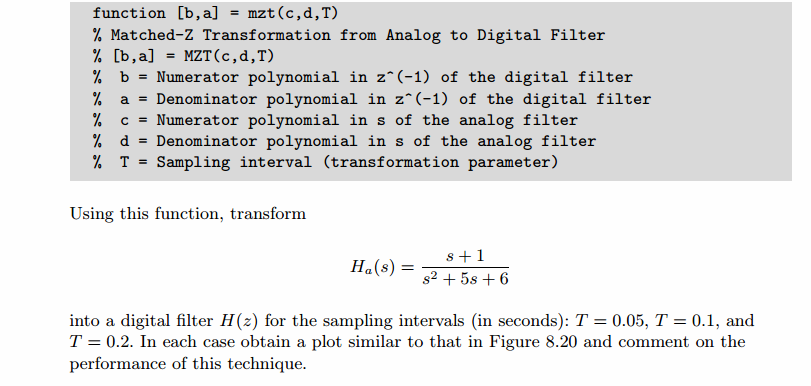
代码:
%% ------------------------------------------------------------------------
%% Output Info about this m-file
fprintf('
***********************************************************
');
fprintf(' <DSP using MATLAB> Problem 8.26
');
banner();
%% ------------------------------------------------------------------------
c = [1, 1]; d = [1, 5, 6]; % Numerator and Denominator of Ha(s)
T = 0.2; Fs = 1/T; % Sample interval
%[b, a] = imp_invr(c, d, T) % digital Num and Deno coefficients of H(z)
[b, a] = mzt(c, d, T) % digital Num and Deno coefficients of H(z)
% Calculation of Impulse Response:
%[hs, xs, ts] = impulse(c, d);
figure('NumberTitle', 'off', 'Name', 'Problem 8.26 Imp & Freq Response')
set(gcf,'Color','white');
t = [0:0.01:4]; subplot(2,1,1); impulse(c,d,t); grid on; % Impulse response of the analog filter
axis([0,4,-0.1,1]);hold on
n = [0:1:4/T]; hn = filter(b,a,impseq(0,0,4/T)); % Impulse response of the digital filter
stem(n*T,hn); xlabel('time in sec'); title (sprintf('Impulse Responses, T=%.2f',T));
hold off
%n = [0:1:29];
%hz = impz(b, a, n);
% Calculation of Frequency Response:
[dbs, mags, phas, wws] = freqs_m(c, d, 2*pi/T); % Analog frequency s-domain
[dbz, magz, phaz, grdz, wwz] = freqz_m(b, a); % Digital z-domain
%% -----------------------------------------------------------------
%% Plot
%% ω = ΩT = 2πF/fs
%% -----------------------------------------------------------------
M = 1/T; % Omega max
subplot(2,1,2); plot(wws/(2*pi),mags*Fs,'b', wwz/(2*pi)*Fs,magz,'r'); grid on;
xlabel('frequency in Hz'); title('Magnitude Responses'); ylabel('Magnitude');
text(1.4,.5,'Analog filter'); text(1.5,1.5,'Digital filter');
运行结果:
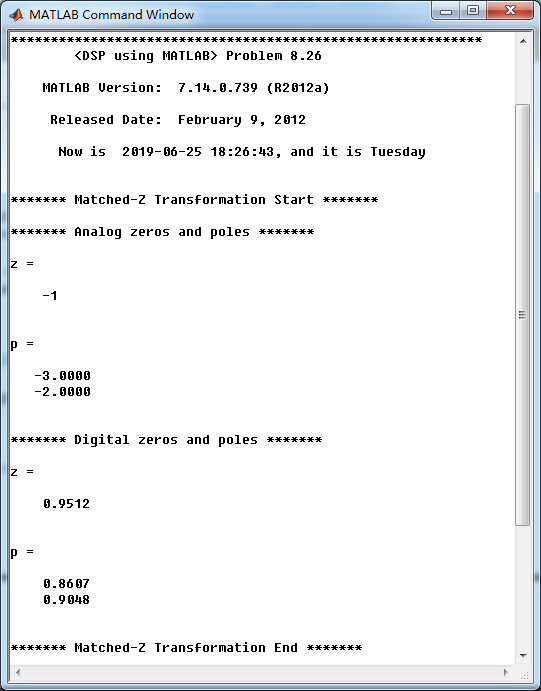
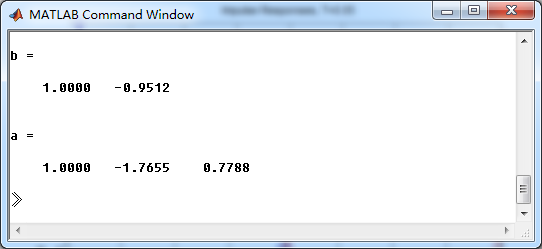
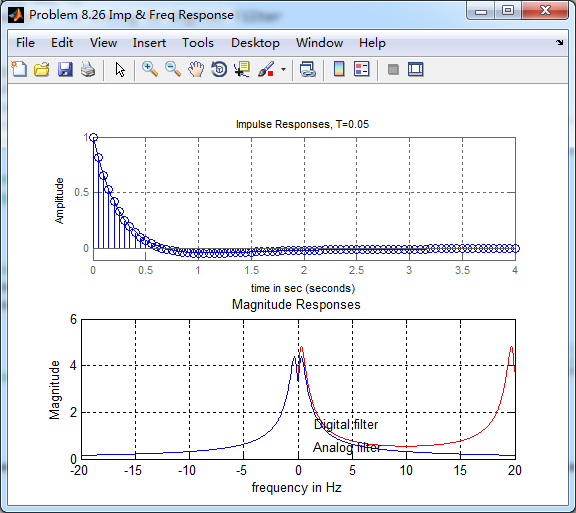
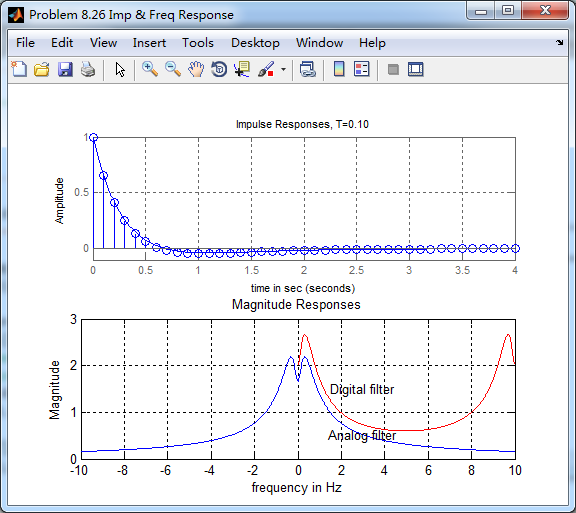
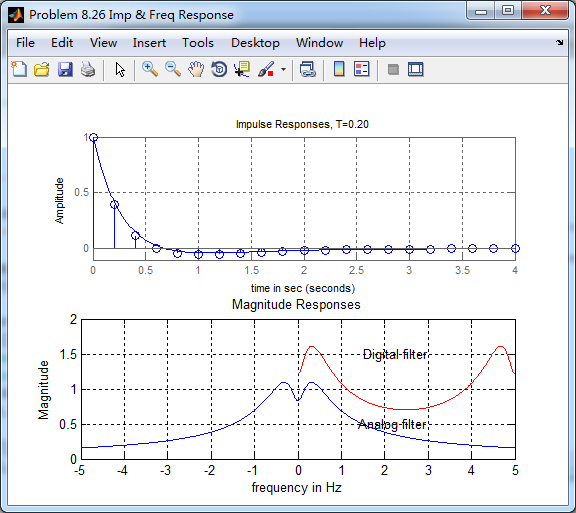
可以看出,采样间隔T越小,数字滤波器幅度响应越接近模拟滤波器。